| Article ID | Journal | Published Year | Pages | File Type |
|---|---|---|---|---|
| 3019298 | Revista Española de Cardiología (English Edition) | 2007 | 4 Pages |
Typically, sustained monomorphic ventricular tachycardia (SMVT) in patients with a previous myocardial infarction (MI) is characterized by a wide QRS complex. However, occasionally patients present with SMVT and a narrow QRS complex (N-SMVT). We studied retrospectively the incidence of N-SMVT (i.e., QRS interval <140 ms) in patients with a previous MI and inducible SMVT who underwent electrophysiological evaluation. Of the 135 consecutive patients with inducible SMVT, 8 (5.9%) presented with inducible N-SMVT. The mean QRS complex duration in patients with N-SMVT was 126 (8) ms. Radiofrequency ablation was successful in 5 out of 6 patients (83%). One of the remaining two received an implantable defibrillator, while the other was given amiodarone. Findings during radiofrequency ablation showed that the reentry circuit was located in the left septum in 4 out of the 5 patients (80%). N-SMVT is relatively uncommon, but the success rate of radiofrequency ablation is high. The reentry circuit is most often located in the septum.
Las taquicardias ventriculares monomórficas sostenidas (TVMS) en pacientes con infarto de miocardio (IM) previo presentan, habitualmente, un complejo QRS ancho. Sin embargo, en ocasiones se han descrito TVMS de complejos QRS «estrechos» (TVMS-E). Se analizó retrospectivamente la incidencia de TVMS-E (QRS < 140 ms) en pacientes con IM previo y TVMS inducidas en el estudio electrofisiológico. De 135 pacientes consecutivos con TVMS inducibles, 8 (5,9%) presentaron al menos una TVMS-E. La duración media del QRS de las TVMS-E fue de 126 ± 8 ms. La ablación con radiofrecuencia (ARF) fue eficaz en 5/6 pacientes (83%). De los restantes, en uno se implantó un desfibrilador y en el otro se indicó amiodarona. El resultado de la ARF evidenció una localización septal izquierda del circuito en 4/5 pacientes (80%). Las TVMS-E son relativamente raras pero la eficacia de la ARF es elevada; el septo es la localización más frecuente del circuito.
